Excerpts from Jim Conrad's
Naturalist Newsletter
from the February 21, 2010 Newsletter issued from Hacienda Chichen Resort beside Chichén Itzá Ruins, central Yucatán, MÉXICO; limestone bedrock, elevation ~39m (~128ft), ~N20.676°, ~W88.569°
TRUE DEATH'S HEAD
I'd expected a mail from Bea in Ontario passing on the name of an insect she'd identified for me, but when her letter appeared with "True Death's Head" written in the subject box I couldn't imagine what fit of desperation had taken possession of her. As it turned out she was fine, just sending the name of the two- inch long (52 mm), spiny legged critter pictured below:
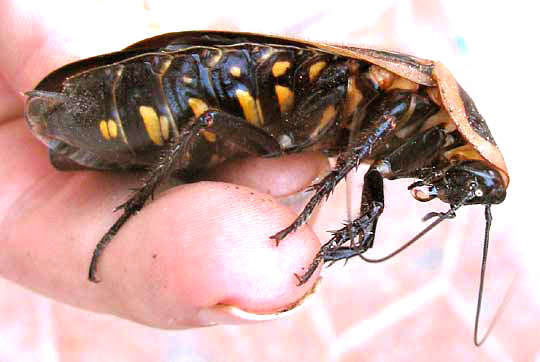
Seeing the shield-like plate (the pronotum) covering the insect's thorax and back of the head, you might recognize this as a cockroach. It's BLABERUS CRANIIFER, a species native to Mexico, the West Indies and Central America, and introduced into Florida. The one in the picture was found at dusk scurrying along the dry, shadowy bottom of a concrete gutter beside the town square in Valladolid, about half an hour east of here, where I'd gone to pick up new glasses. You can see him in his gutter, displaying the red markings on his pronotum suggesting "Death's Head," below:
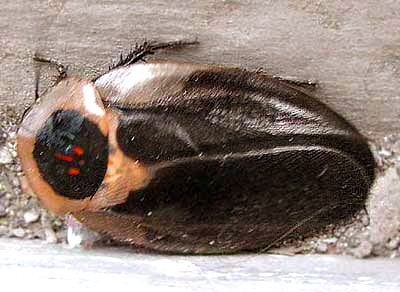
The "True" part of the name comes from there being a similar species known as the False Death's Head.
I hadn't expected to find much information about the True Death's Head Cockroach, but it turns out that there's a lot. That's because this is a favorite species for animal collectors, since it's a handsome insect, can't climb glass terrarium walls, has well developed wings but can't fly, doesn't stink unless provoked and then only a little, and is extremely easy to maintain, eating just about anything.
Apparently large numbers of cockroaches under the Death's Head name are sold in US pet stores, as tarantula food. However, I read that most of those are actually a hybrid between Blaberus cranifer and another species. In captivity they live about a year.
from the August 6, 2017 Newsletter issued from Rancho Regensis north of Valladolid, Yucatán, MÉXICO;
elevation ~40m (~130 ft), N~20.876°, W~88.170°
DEATH'S HEAD BEHIND THE REFRIGERATOR
Despite having no electricity at the rancho, several refrigerators are scattered about, all broken down and all used for storage. They're just the thing were rodents and insects get into everything. The hut I live in has two, one outside for storing food and another inside for clothing.
This week when I was sweeping the hut I nudged the clothes refrigerator a little away from the wall to get dust behind it, and saw something strange sticking to the wall, something primitive looking, like you'd expect to find fossilized in stone. I grabbed a flashlight, focused it on the object, poked my camera into the crack, and took the picture shown below:
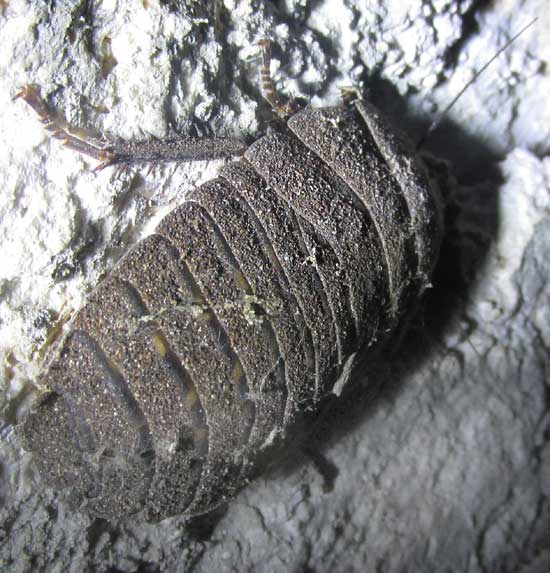
I can't focus my eyes at certain distances so not until I reviewed the image in the camera did I notice that it bore spiny legs and slender antennae. This encouraged me to shift to the refrigerator's other side, focus the flashlight from a new angle, and slip in the camera for a picture showing antennae arising from a head tucked beneath a top shell, shown below:
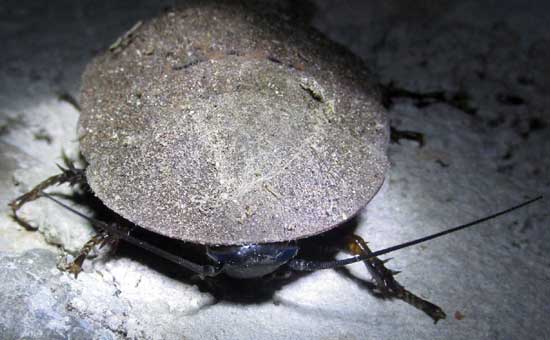
At this point I remembered that I'd seen something like this before, back in 2010 when a similar one turned up one night inside my mosquito net, at Chichén Itzá. That one was identified as an immature stage of the True Death's Head Cockroach, BLABERUS CRANIIFER, distributed from the southern US through Mexico to Belize, and in the Caribbean. Once I realized what the refrigerator visitor was I plucked him from the wall, and took him outside for a portrait, shown below:
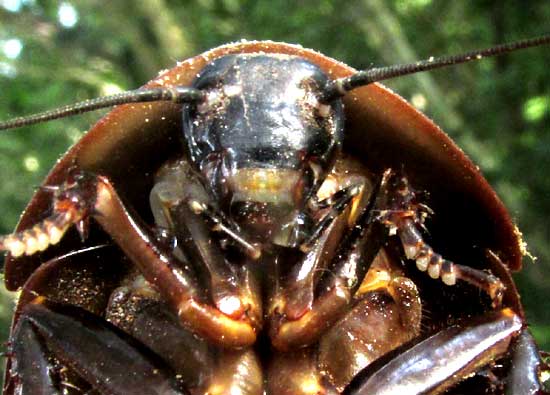
The adult Death's Head has wings and can glide for short distances but can't fly. Wingless juveniles burrow.